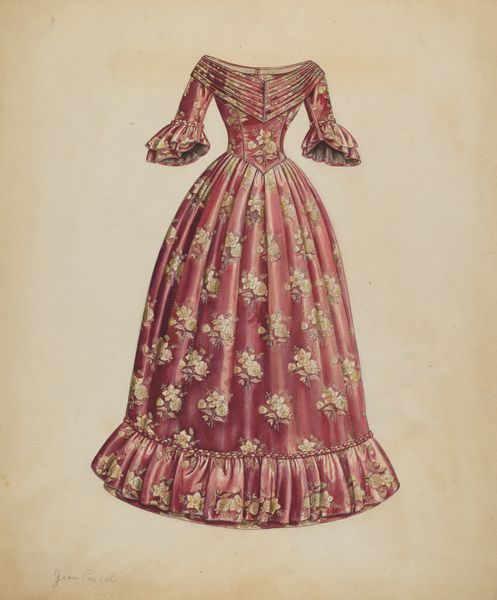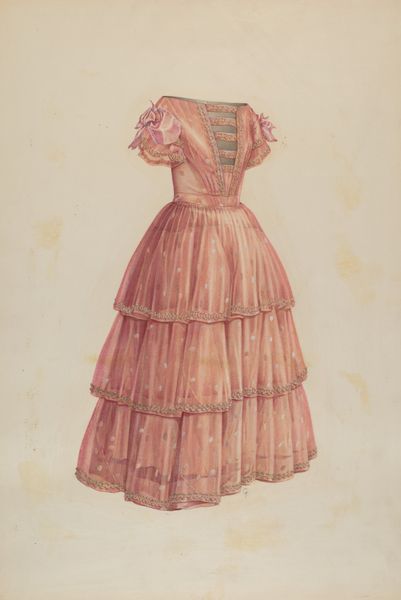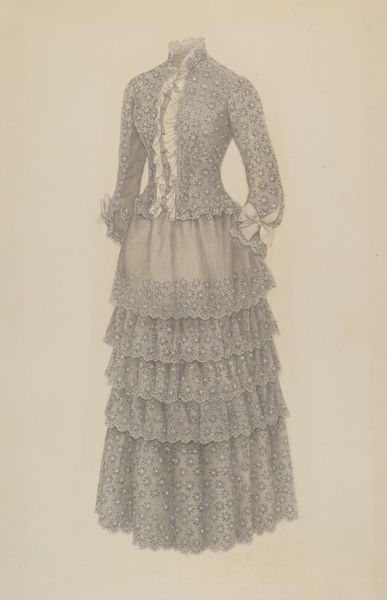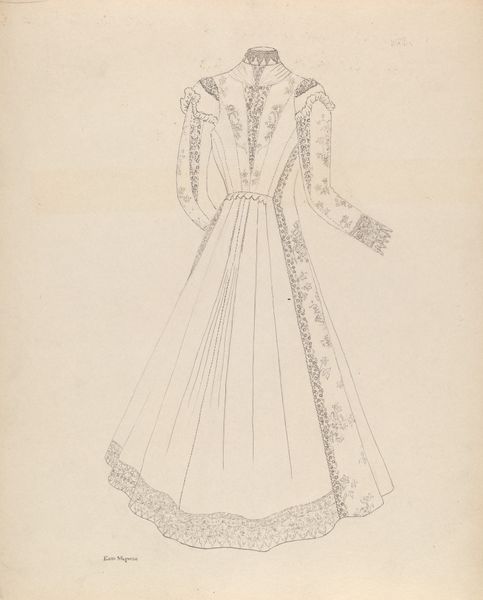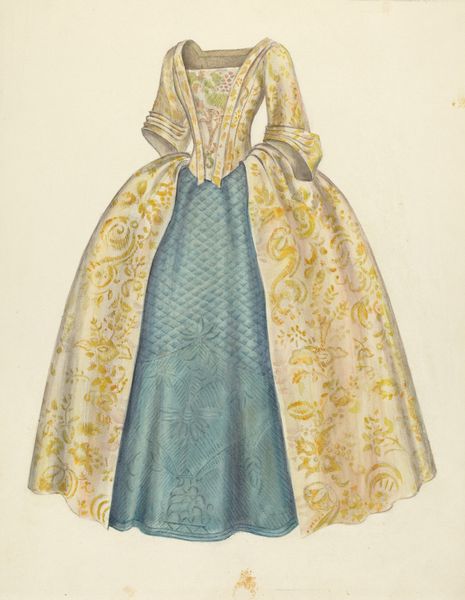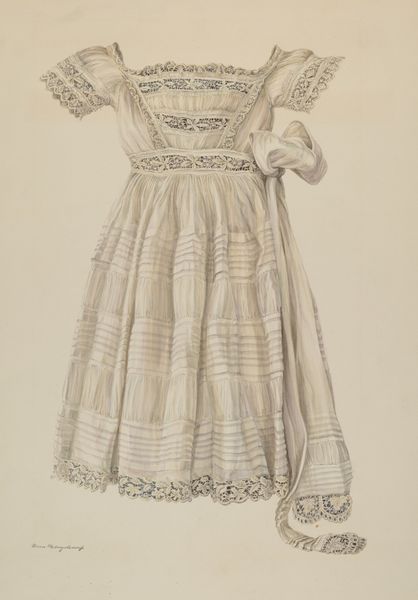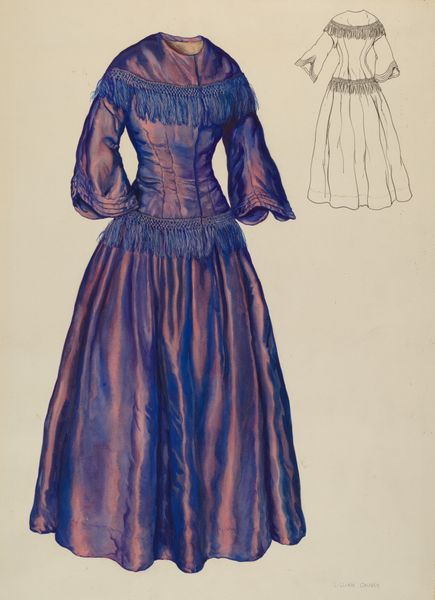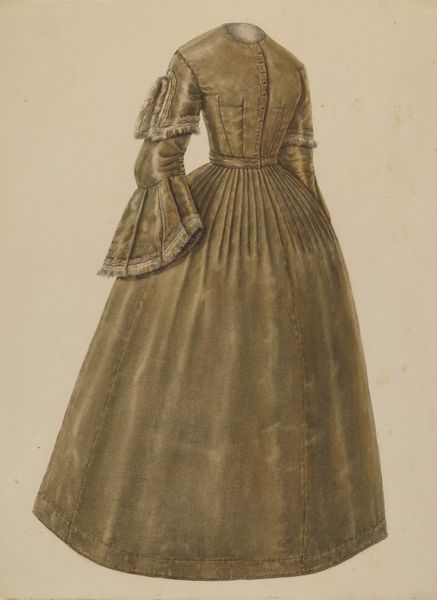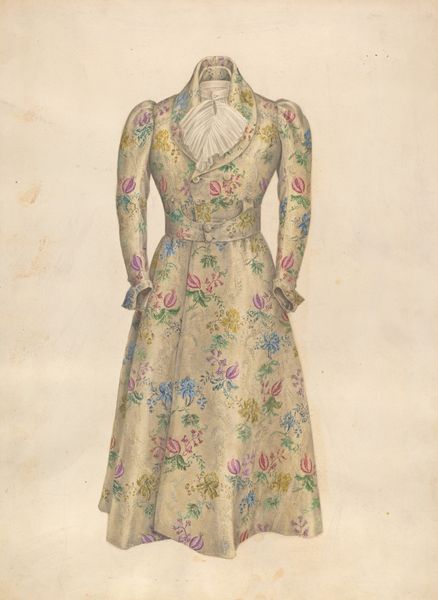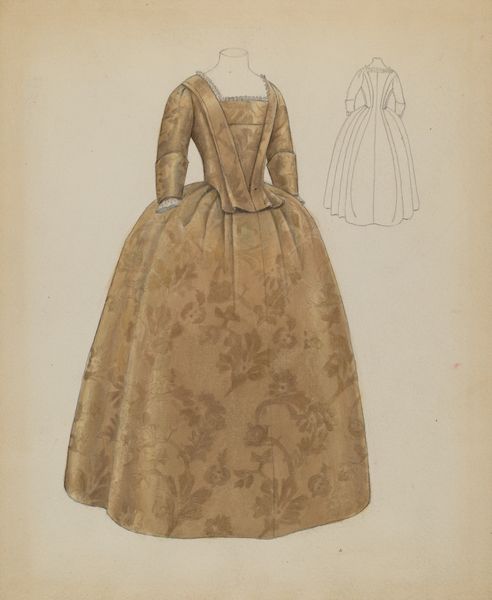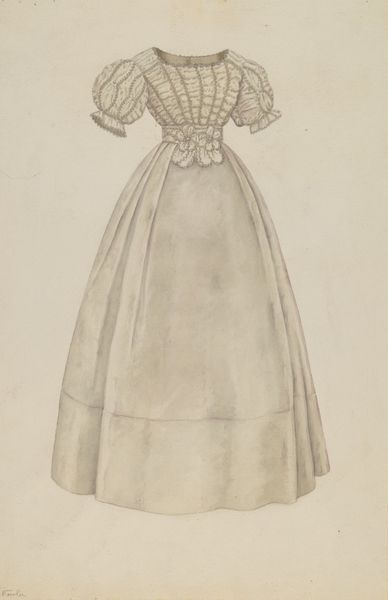
drawing, paper, watercolor
#
drawing
#
figuration
#
paper
#
watercolor
#
coloured pencil
#
watercolor
Dimensions: overall: 45.8 x 38.3 cm (18 1/16 x 15 1/16 in.)
Copyright: National Gallery of Art: CC0 1.0
Curator: At first glance, this drawing feels so wistful, almost like a memory fading at the edges. The soft mauve color palette coupled with the delicate gold floral details evoke such a bygone era. Editor: That's interesting because to me, it speaks to something about social performance and constraints. Here we have Irene Lawson’s "Dress" from around 1938, a watercolour and coloured pencil drawing that visualizes high-society fashion and expectations during that period. The art isn’t merely about fabric; it reflects gender and class norms through clothing. Curator: Absolutely, and if you think about the social events where a dress like this might be worn - galas, balls - the art world and elite circles of the late 30's are intimately linked, both shaping and reflecting societal values. Editor: It's this very constructedness of femininity. How a dress like this mandates specific movements and behaviours to signal belonging and desirability in these highly exclusive spaces. The almost claustrophobic detailing around the neckline speaks volumes to those restricted roles. Curator: Though at the same time, you cannot help but appreciate the elegance of the craftmanship. This is just a study, yet she carefully used watercolours and pencils to make such soft folds, or suggest such luxury. We're seeing Lawson working as part of a culture of garment design. Editor: Precisely! So, we have to think: who's wearing it, in what space and what were those expectations, as well as think about the maker of this study. While the dress signifies beauty, let’s not romanticize that. This gown embodies all those socio-economic restraints and power dynamics too. Curator: Thanks for reminding us to look beyond the obvious surface appeal, thinking of both social histories as well as considering individual experience is vital when analyzing artifacts such as "Dress." Editor: Indeed, and the ability of this work to generate such an immediate response, whilst encouraging nuanced investigation and understanding, stands testament to the ability of fashion itself to provoke debate around identity.
Comments
No comments
Be the first to comment and join the conversation on the ultimate creative platform.
